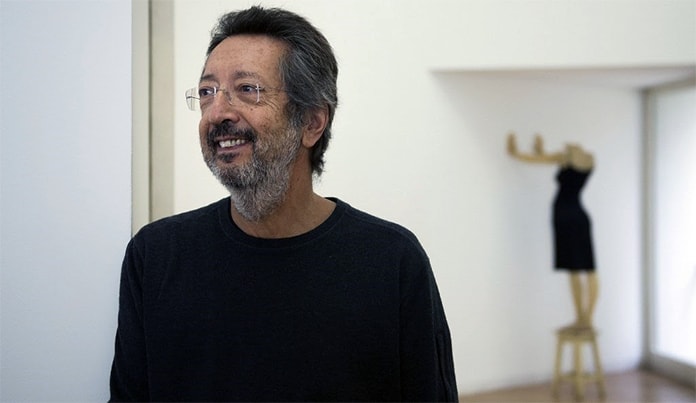The Portuguese artist Julião Sarmento has died at the age of 72 at the Fundación Champalimaud hospital in Lisbon. Author of a multifaceted work, he began his activity in the 1970s and became the Portuguese artist with the greatest international projection, exhibiting in prestigious galleries and museums. His work is part of the collections of the Museum of Contemporary Art in Los Angeles, the Guggenheim and MoMA in New York, the Center Pompidou, the Serralves Museum, or the Gulbenkian Foundation. And in Spain, it appears in the Reina Sofía Museum, the IVAM, or the MACBA.
Julião Sarmento was born in Lisbon in 1948 and lived and worked in Estoril. He studied painting and architecture at the Superior School of Fine Arts in the Portuguese capital between 1967 and 1974. A multidisciplinary artist, he worked in a wide range of media: painting, drawing, sculpture, photography, film, video, performance, sound, and installation. He has also developed several site-specific projects and starred in numerous solo exhibitions around the world over the last five decades, as well as participating in a number of group shows.
Although the artist returned again and again to the same obsessions, his work is incredibly varied and is not easy to define. ” I mix everything: my anguish, my desires, my needs, my despair … My pleasures, the things I love, the things I hate, what has interested me on that particular day …”, he commented in 2011 to El Cultural in an interview with the British critic Adrian Searle, who curated his exhibition Short distances at La Casa Encendida in Madrid. “My work shapes a global chain of associations. It is like someone who writes a book. I am a writer, but instead of writing with words, I write with images”. The writers were, in fact, a recurring presence throughout his work, from Flaubert to the American novelists, passing through George Bataille, Jacques Lacan, or Wittgenstein.
In the beginning, Sarmento ventured into graphic work thanks to a political commitment to the Salazar dictatorship and to civic and political contribution after the 1974 Carnation Revolution. During these early years, he was fundamentally a painter linked to pop iconology, but he soon refuses to be pigeonholed into this stream. However, it will continue to be its best-known facet, especially for the so-called White Paintings, with their dirty surfaces reminiscent of stained sheets and their drawn and partially erased images.
Julião Sarmento’s work has always been an exploration of the territory of desire. An unstable territory, like passion, that the versatile Portuguese artist has excavated over four decades, forging an austere stylistic repertoire of images charged with tension. Between the not yet and the no longer, in that waiting without answers, indeterminate, forged with incisions and juxtapositions, was erected the schematic and fragmentary figure of a disembodied woman, often without a face, even without ahead.
One of the difficulties that arose in the face of Sarmento’s work is precisely its representation of women. “I like women and I like working with women. They are, for me, a leitmotif. To start working I need a pretext, and in the representation of the female body I find it ”, he explained.
In Sarmento’s work, Pina Bausch is a constant reference, almost an involuntary collaborator, like all that series of writers in whose works she drinks. He has often been involved in works created in collaboration, such as those made with artists such as John Baldessari and Lawrence Weiner, musicians such as Arto Lindsay and Paulo Furtado, with the filmmaker Atom Egoyan …
Sarmento also represented Portugal at the 46th Venice Biennale (1997), was included in Documenta 7 (1982) and Documenta 8 (1987), in the Venice Biennale (1980 and 2001), and in the Sao Paulo Biennial in 2002.

